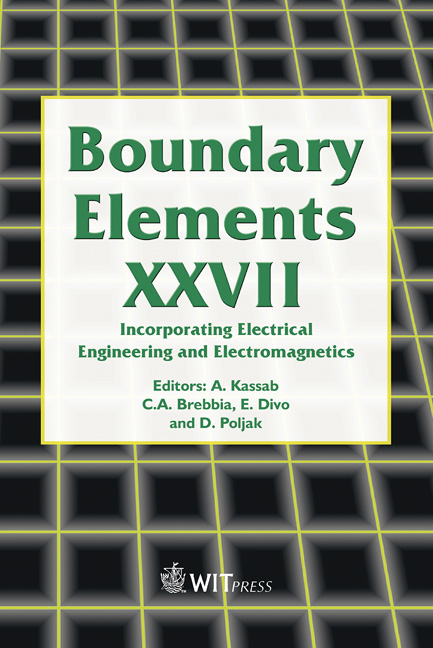Transient Plane Wave Coupling To A Finite Length Wire Buried In A Conductive Ground
Price
Free (open access)
Transaction
Volume
39
Pages
9
Published
2005
Size
360 kb
Paper DOI
10.2495/BE050561
Copyright
WIT Press
Author(s)
V. Dorić, D. Poljak & V. Roje
Abstract
The calculation of current induced on a straight wire buried in a lossy ground due to a transient plane wave is presented. A frequency domain model is based on the Pocklington integral equation arising from scattering theory and the thin wire approximation. Influence of the nearby air-earth interface is taken into account via the reflection coefficient appearing within the corresponding integral equation kernel. The Pocklington integral equation is solved using the indirect Galerkin-Bubnov variant of the boundary element method. Time domain results are obtained by means of the inverse Fourier transform. Some illustrative numerical examples are presented. 1 Introduction The calculation of the current induced along power and communication cables due to a plane wave is important issue in various EMC studies. Although there are a large number of papers dealing with plane wave coupling to the overhead wires [1]-[3], there are only few dealing with the buried wires [4, 5]. Most of the studies related to this problem are based on an approximate transmission line (TL) approach. Although quite efficient for the long (infinite) cables, TL approach fails for the finite length wires [6]. Alternative approach is based on the wire antenna theory by which the radiation effects are taken into account. Antenna theory approach provides accurate solutions for the finite length wires. On the other hand the solution becomes significantly time consuming when very long cables are considered. Through the antenna theory approach the effects caused by the air-earth interface are taken into account through exact Sommerfeld integral formulation.
Keywords





